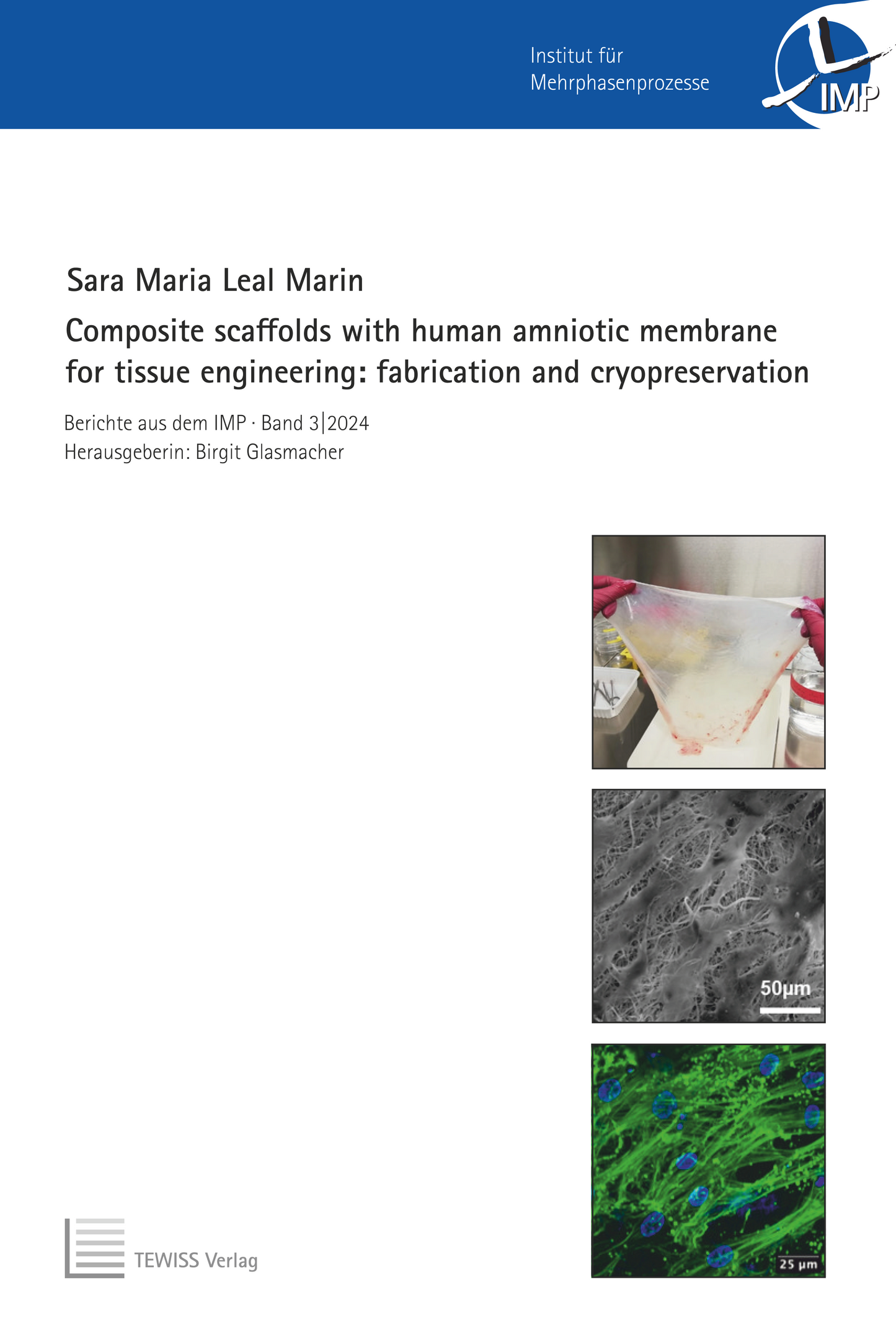Composite scaffolds with human amniotic membrane for tissue engineering: fabrication and cryopreservation
Autor: Sara Maria Leal Marin
ISBN: 978-3-69030-002-5
Dissertation, Leibniz Universität Hannover, 2024
Herausgeber der Reihe: Birgit Glasmacher
Band-Nr.: IMP 03/2024
Umfang: 168 Seiten, 65 Abbildungen
Schlagworte: amniotic membrane, electrospinning, tissue engineering, cryopreservation
Kurzfassung: Human amniotic membrane (hAM) from placentas is currently used in dermatology as a biomaterial for plastic surgery skin grafts and as a biological dressing for skin burns, wounds, chronic leg ulcers, eye healing and other applications. Due to its unique properties, hAM is considered an important potential source of scaffold material with promising applications in regenerative medicine and tissue engineering (TE). However, the clinical application of hAM faces some challenges regarding immunogenicity, patient specificity, and changes in mechanical properties. Therefore, it is important to develop a TE membrane material that mimics the structure and functional properties of native hAM and remains stable during storage. The main objective of the work was to develop, characterize, and efficiently store artificial electrospun composite scaffolds that mimic the structural and functional properties of native hAM. Therefore, composite scaffolds were produced that exhibit enhanced biocompatibility, mechanical strength, and inherent antibacterial properties, making them promising candidates for various clinical applications.


